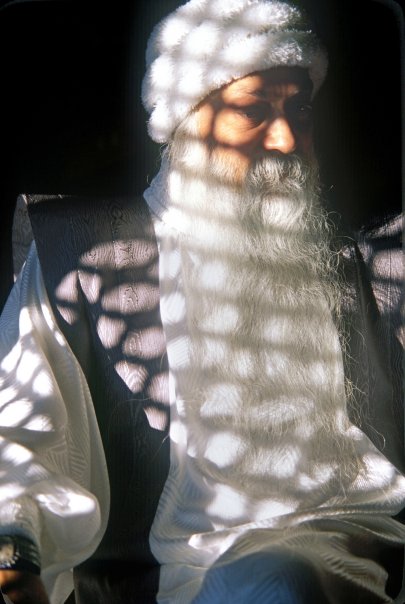Osho – The very word ‘Christ’ comes from the Sanskrit work ‘Krishna’. From Krishna it has moved into many languages and ultimately it has become Christ. In its long journey from Krishna to Christ, Krista has been one of the very significant milestones. Krista is exactly halfway in the journey from Krishna to Christ. In fact in Bengali, one of the Indian languages, Krishna is called Krista, he is not called Krishna.
Christ is not a personal name of Jesus. His name is Jesus. The moment he attains to the ultimate he is called Christ. In the East we have called that state Krishna; it is the same word and the same state too. Your name will mean Christ-consciousness. And that is the goal of sannyas, to become crowned with consciousness.
Man lives in unconsciousness. He lives like a robot. The major part of his being is in darkness; just a little bit has come out of the darkness, just the tip of the iceberg — and that too is very fragile. At any moment it goes back again into darkness. Somebody insults you and you lose your consciousness. It is very fragile. You become unconscious, you start behaving in an unconscious way, and later on you yourself recognise it. You wonder ‘How did I do all this?’ You start saying ‘It happened in spite of me. I never wanted to do it.’
People have done things in anger which only insane people can do — and they were not insane, they were as sane as anybody else, but in anger they lose consciousness, in passion they lose consciousness. There are a thousand and one situations every day when we lose consciousness, so that small portion of consciousness is not very effective either. If one is alert about using it rightly the only purpose is to meditate with that small piece of consciousness that you have not, because through meditation more and more of the unconscious starts becoming conscious, more and more of your hidden darkness starts disappearing.
Right now ninety per cent is unconscious, ten per cent is conscious. As you meditate, slowly, fifteen per cont becomes conscious, twenty per cent becomes conscious. The moment there is at least fifty per cent of consciousness and fifty per cent of unconsciousness, then you can rely upon your consciousness because now there is a balance; the unconscious cannot easily take over.
When there is sixty per cent of consciousness and only forty per cent of unconsciousness, you can move with certainty in life. Somebody can insult you and you will remain unaffected. When ninety per cent becomes conscious and only ten per cent is left unconscious the first satori happens, the first glimpse of reality. And in that ten per cent many satoris happen; thousands of satoris can happen, but at least three are absolutely necessary.
As that ten per cent is transformed into consciousness it is transformed in three parts. The first part gives you the first satori, the second part the second satori, and the third part gives you samadhi. When one hundred per cent of your being is conscious we call it samadhi. The very word ‘samadhi’ means that one has arrived at absolute equanimity, at absolute equilibrium. Now nothing can disturb you, even death cannot disturb you.
That is the goal of sannyas, to arrive at one hundred per cent consciousness. At that moment one is a Christ, a Krishna, a Buddha, or whatsoever name one wants to use. These are just names, but the real thing is one hundred per cent consciousness. And it is possible; everybody is born with the potential, we just have to work upon it to change it. And that small piece of consciousness can be used to transform the whole being into consciousness. It can become a triggering point.
It is a small light but we can create more and more light through it. It is just a small candle but more candles can be lit by it. A chain of candles can be lit through it and your whole life becomes a festival of light.
In India every year we celebrate one night, the festival of lights. People burn thousands of candles and small lamps. The whole country celebrates the festival of lights. That night is the night when Mahavira, one of the greatest mystics ever, became enlightened. And it is a very special night in that way because Mahavira is the only person who became enlightened on the darkest night.
Buddha became enlightened on the full-moon night and Mahavira became enlightened on the no-moon night. That is very significant, it is a very rare phenomenon. Almost all enlightened people have become enlightened either on a full-moon night or very close to it. Except for Mahavira I have never come across another person who has become enlightened on the darkest night. Hence we celebrate that night, the darkest night, as the festival of lights.
But people have completely forgotten the significance; they go on observing the festival as a ritual. There are thousands who don’t even connect it with Mahavir. There are millions who don’t even know the name of Mahavir or know that it has anything to do with Mahavir.. But it shows one thing, that even if you are living in the darkest night, there is a possibility that it can be transformed into a festival of light. So there is no need to feel hopeless — even the darkest night has a dawn to it.
Source – Osho Book “I Am Not As Thunk As You Drink I Am”
